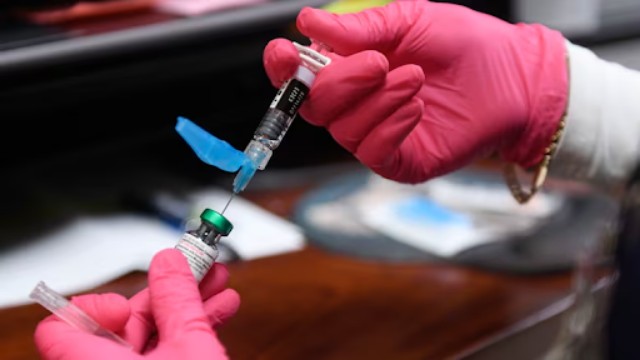
A ninth grader places her cellphone in to a phone holder as she enters class at Delta High School, Friday, Feb. 23, 2024, in Delta, Utah. Most schools have policies regulating student cellphone use at school. But the reality is kids don’t always follow the rules and schools enforce them sporadically. (AP Photo/Rick Bowmer, File)
Joe Clement, a high school teacher in Virginia, has noticed a concerning trend among parents: the habit of texting their children during school hours. These messages, ranging from test scores to dinner plans, contribute to the already prevalent distractions caused by smartphones and social media, a concern shared by educators nationwide. While parents understand the negative impacts of these technologies, they may overlook how their own actions exacerbate the issue within the school environment.
The constant stream of messages from parents adds to the atmosphere of interruption and diversion, making it challenging for teachers to maintain focus during classes, even in schools where cellphone regulations are in place. Despite efforts to regulate cellphone use, the buzzing of notifications persists, occupying students' mental space and hindering their ability to concentrate on learning.
Teachers and experts advocate for changes in parental behavior to minimize phone-related distractions in schools. They suggest refraining from texting children during school hours unless absolutely necessary. Instead, parents can utilize the school's front office for urgent communication, allowing students to focus on their studies without unnecessary interruptions.
The Phone-Free Schools Movement, led by concerned parents like Sabine Polak, encourages parents to discourage non-urgent texting from their children during school hours. This collective effort aims to reduce distractions and foster a more conducive learning environment.
Furthermore, educators emphasize the importance of limiting digital communication during school hours. Parents, accustomed to constant contact during the pandemic, should recognize the need for independence during school hours. Excessive communication can contribute to anxiety among students and hinder their problem-solving skills and self-regulation.
Dr. Libby Milkovich, a pediatrician specializing in child development, highlights the detrimental effects of constant digital communication on children's autonomy and coping skills. Encouraging parents to consider the underlying reasons for their need for constant access to their children can lead to healthier communication habits.
In addition to limiting digital communication, teachers like Beth Black suggest confiscating inactive phones to minimize distractions. Some schools implement policies requiring students to store their phones in designated holders during class, but students may find ways to bypass these measures.
Turning off notifications on phones can also mitigate distractions, both in and out of the classroom. Studies have shown that constant notifications significantly impact students' ability to focus and retain information during class.
Ultimately, teachers stress the importance of physical separation from phones during school hours to minimize distractions. While efforts to reduce digital distractions require collaboration between parents, students, and educators, the benefits of creating a focused learning environment are well worth the effort.















